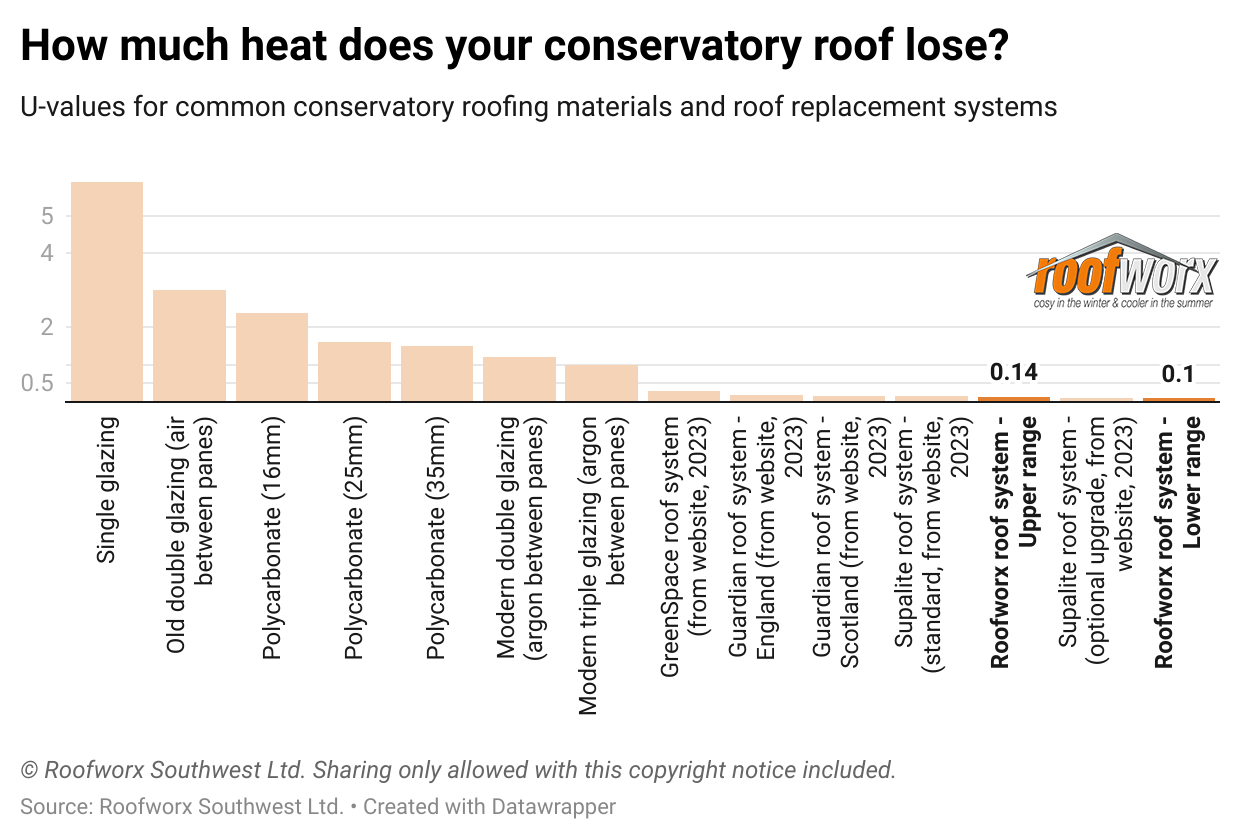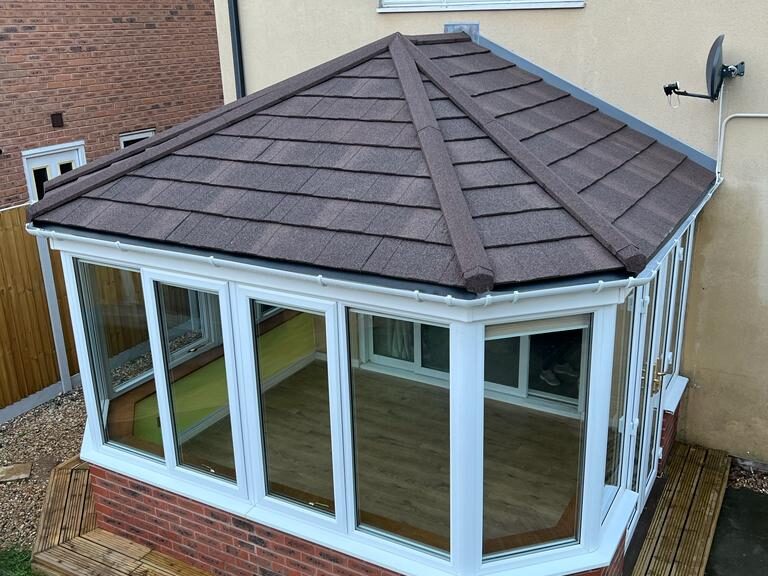CONSERVATORY CONVERSIONS: Picture used with kind permission of Roofworx Southwest. Visit their gallery page for more pictures of conservatories with tiled roofs.
Is your conservatory roof looking tired, or are you spending a fortune to keep it warm in the winter (or cool in the summer)? Perhaps it’s time to look at the various types of conservatory conversions on the market.
Conserving heat has never been so important
With volatile energy prices, fuelled by global conflicts, and worrying news from climate scientists about the effects of burning fossil fuels, minimising our energy consumption makes sense on so many levels.
At the same time, who wants to lock up their conservatory over the winter because it’s too cold to sit out there?
Conservatory conversions are a popular way for homeowners to future-proof their home from up-and-down energy prices, but what material and which company should you choose?
Before we present a few conservatory roof options, let’s look at the second aspect we mentioned in the title: elegance.
Can conservatory conversions be elegant?
Appearances matter, and conservatory conversions come in a wide variety of forms. Do you prefer a traditional looking roof, one that is in keeping with the local area, or are you more attracted to a modern aesthetic?
Style options vary depending on the type of conservatory roof you choose, from the very limited frame style and colour options of polycarbonate conservatory roofs to the wide range of textures and shades available with tiled conservatory roofs.
We recommend you also think about the interior. Some types of conservatory conversions give you more scope for designing the inside space to suit your needs.
For example, if you want to create a media room, office or study, you probably want to avoid the glare of the sun and excessive noise from barking dogs, arguing neighbours or heavy rain showers. Polycarbonate and untreated glass conservatory roofs may be cheap, but they don’t make for a space that’s conducive to quiet enjoyment, working or studying.
Solid conservatory roofs with integrated insulation can solve these issues. You will also have a ceiling you can paint and embed spotlights in. This will give you more flexibility when it comes to designing your room.
Let’s now look at four different types of conservatory roof conversions and how they rank on the energy efficiency and elegance scales.
4 types of conservatory conversions
1. Polycarbonate
If you already have a polycarbonate roof, you may think that a simple like-for-like conservatory roof replacement will be enough to solve your energy efficiency problems, maybe opting for thicker sheets.
While you may get some benefit from a modern polycarbonate roof, you will still experience those extremes of temperature you will be used to. If you look at our graph below, even 35mm polycarbonate roofs are a lot less energy efficient than modern double glazed, triple glazed and insulated conservatory roofs.

Polycarbonate roofs are not elegant. You can sometimes choose the colour of the frame, but this is really the limit to your design flexibility.
Polycarbonate roofing won’t provide an elegant, energy-efficient interior either. The inevitable temperature fluctuations will not only make your conservatory uncomfortable for family and guests, it will also damage sensitive electrics and materials, limiting your options for design and functionality.
2. Glass
When it comes to energy efficiency, modern double and triple glazing are a much better option than polycarbonate but still come behind modern solid roof systems. You do, however, retain natural light so if you’re willing to compromise on efficiency this might be worth your consideration.
Glass conservatory roofs usually offer more in terms of style (both with the glass panels and the frames), while their natural sparkle adds elegance to the exterior.
If you are looking to design an elegant room, bear in mind that many fabrics and materials are sensitive to the effects of UV light. You will need to pay extra for UV-resistant glass to avoid fading and damage. The extra cost might make a solid conservatory roof more appealing.
3. Rubber
You may have seen advertisements for eco-friendly rubber conservatory roofs, and these are certainly more energy efficient than the two previous options.
The main drawback with rubber conservatory roofs is their appearance. If you’re looking for a practical, no-nonsense solution to saving energy and turning your conservatory into a functional space, then rubber may be an option for you.
But if you want something more elegant than a uniform, grey rubber sheet, consider investing in a tiled conservatory roof.
4. Tiles
Tiled conservatory roof replacements are a popular choice for south west conservatory owners partly because they tick both the energy efficiency and elegance boxes.
Tiled conservatory roofs, with integrated insulation, not only offer exceptional thermal efficiency properties, they also eliminate glare and severely reduce noise levels.
Out of all of the conservatory roof options presented so far, tiled conservatory roofs also offer the most flexibility in terms of style. You can choose the colour and finish of your tiles to fit in with the local surroundings or to make an elegant statement of your own.
Your new conservatory roof: what’s the next step?
Check out our companion article on how to choose between conservatory companies. We have also written review articles on popular roofing systems (e.g., Supalite roof system, Guardian solid roof system, etc,. and their alternatives).
